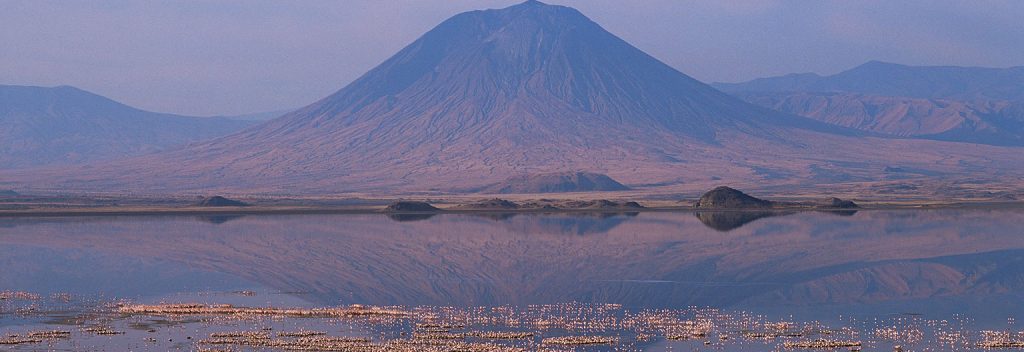Lake Natron Is a salt lake, measuring a maximum of 57 km long and 22 km wide. It is situated in Arusha District of northern Tanzania (on the Kenyan border) at 36 °E longitude and 2° 30’ S latitude lake Natron is principally fed by the Ewaso Ngiro River, which has its catchment in the central Kenyan highlands. The lake is also fed by hot, mineral laden springs that bubble up on the periphery of the lake, bringing soluble salts to the surface
Water loss from lake Natron occurs solely through evaporation, as neither lake has an outlet (surface or subterranean). The high evaporation rates and the constant input of salts from the saline substrate result in extremely saline water. Lake Natron is the ultimate alkaline lake. The water in this lake is so rich in dissolved sodium carbonate that it is frequently viscous to touch.
Lakes Natron have distinctively large populations of wetland birds, flamingos in particular. Lake Natron has the highest concentration of flamingos in East Africa. Both the greater and the lesser flamingo (Phoenicopterus ruber and Phoeniconaias minor) are found at these lake, with the lesser flamingo outnumbering the greater by 100 to one.
Lake Natron is also the site of small-scale sodium bicarbonate (baking soda) extraction plant (Stuart and Stuart 1998), which directly impacts a small area of the lake. These impacts are largely related to the infrastructure associated with the plant.
Lake Natron fall outside of the protected areas network and are offered no formal protection. The area surrounding Lake Natron falls within a large game controlled area, an area in which hunting is allowed but is regulated. This offers some protection to wild animals in the area, but no protection to the ecosystem as a whole.

